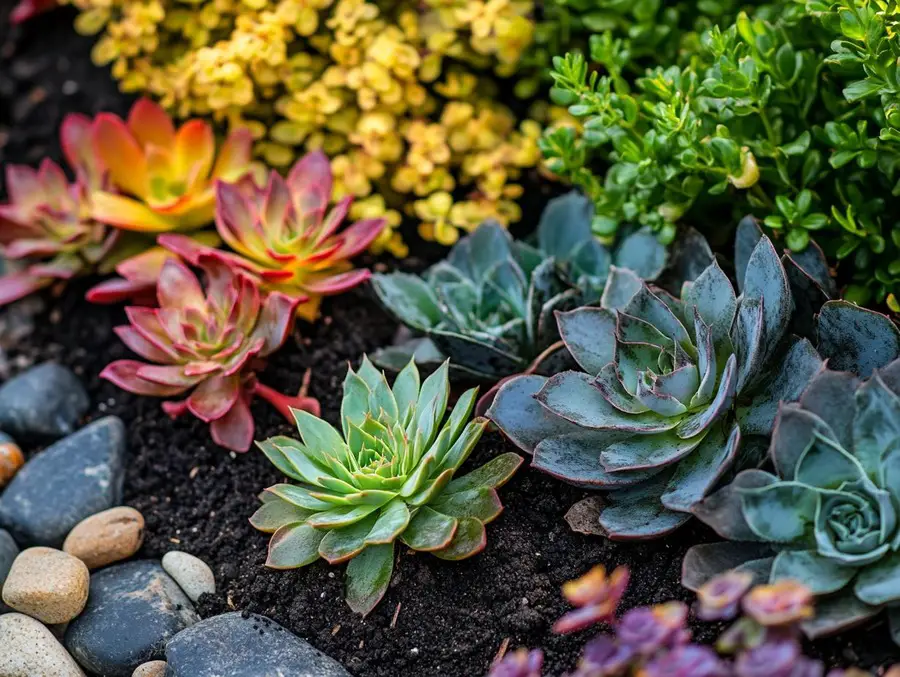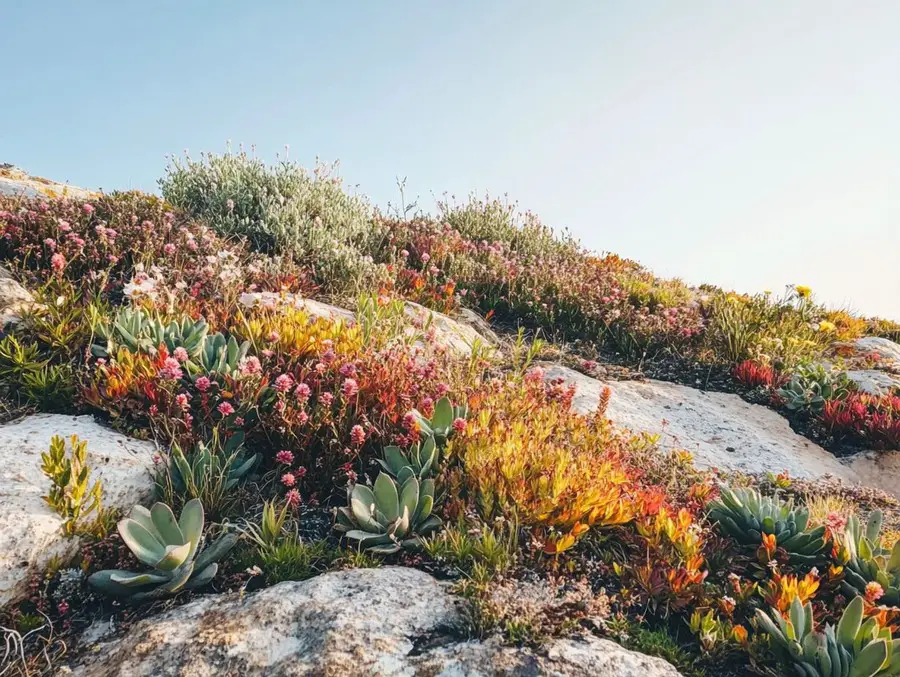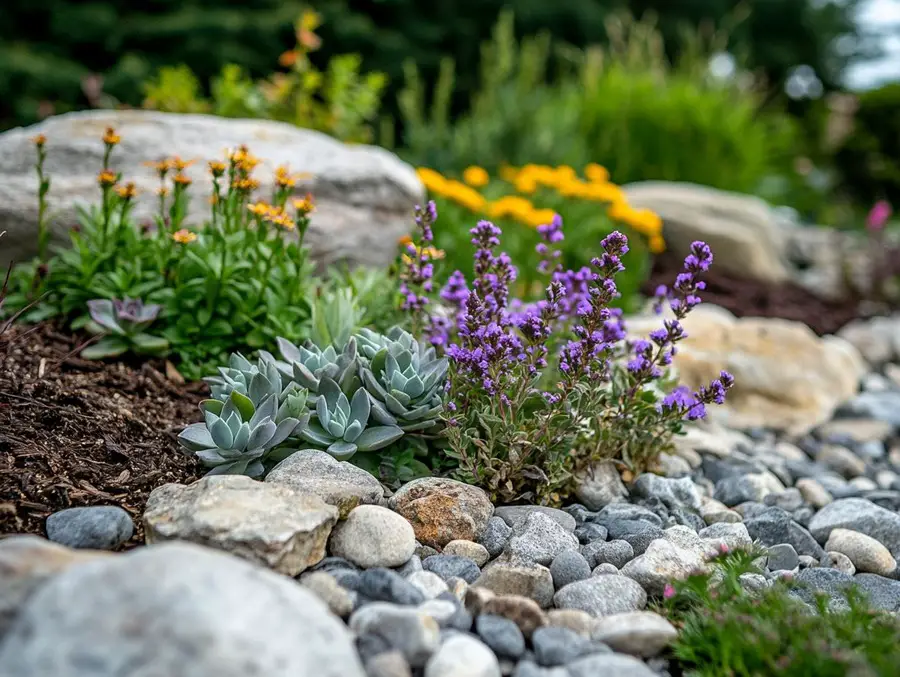We use affiliate links. If you purchase something using one of these links, we may receive compensation or commission.
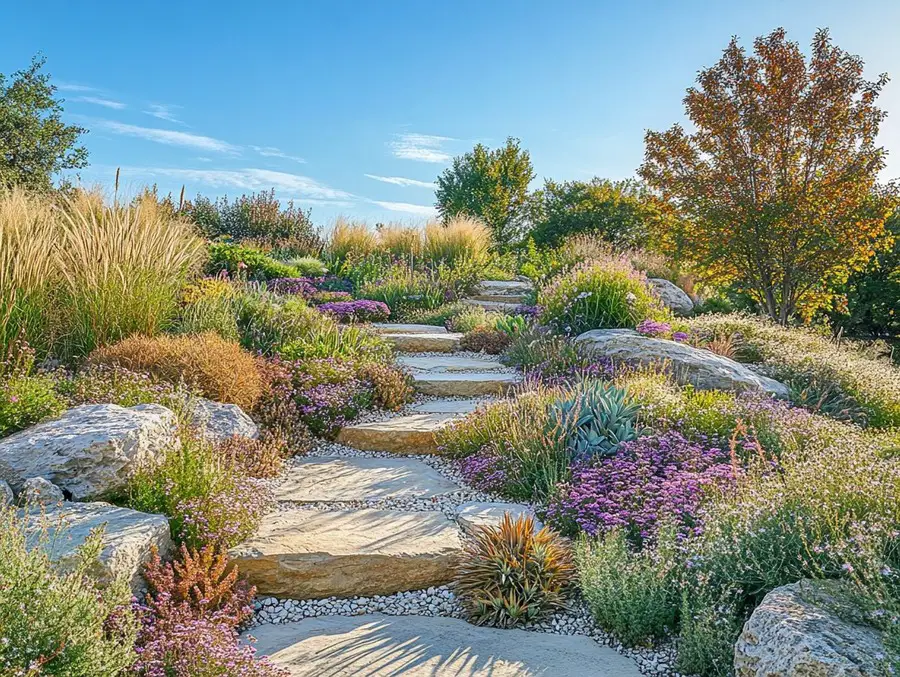
When it comes to sustainable gardening, xeriscaping for different climates is a game-changer.
But how do you make it work in your unique environment?
Whether you’re dealing with intense heat, unpredictable rain, or a mix of both, choosing the right plants and design strategies will help you create a water-wise, thriving landscape tailored to your region.
Xeriscaping for Different Climates Key Takeaways
- Xeriscaping for different climates involves choosing drought-resistant plants and efficient irrigation techniques suited to specific weather conditions.
- In arid regions, succulents and cacti thrive, while Mediterranean climates benefit from lavender and rosemary.
- Using native plants, mulching, and drip irrigation helps conserve water and create a resilient landscape adaptable to any climate.
Xeriscaping for Different Climates: Adapt Your Garden Like a Pro
Xeriscaping is a sustainable landscaping approach that helps you conserve water, reduce maintenance, and make your outdoor spaces look beautiful.
Not only does this method benefit the environment, but it also cuts down on costs.
You’ll learn about essential design considerations suited for different climates, plus get the scoop on native and drought-resistant plants.
We’ll also share some practical tips for putting this all into action and keeping it thriving.
By the end, you’ll feel inspired to create a stunning xeriscape that thrives on minimal water.
What is Xeriscaping for Different Climates?
Xeriscaping is your go-to landscaping approach if you want to save water while using drought-resistant plants and sustainable gardening practices, especially in dry, arid areas.
This method helps the environment and also makes your outdoor space look amazing.
By choosing xeric plants and using water-wise gardening techniques, you can create a beautiful, low-maintenance garden that thrives even during those pesky seasonal droughts and unpredictable rainfall patterns.
It all started back in the 1980s when folks were facing water shortages, and xeriscaping quickly became a popular way to keep soil healthy while cutting down on the need for traditional irrigation systems.
This landscaping style puts a spotlight on native plants, which are perfect for your local climate and need less water and care, helping to support the local ecosystem.
By putting xeriscaping practices into action, you’re not just tackling today’s climate challenges—you’re also building a resilient gardening approach for future generations.
It’s all about promoting sustainable land-use practices that conserve those precious water resources.
Benefits of Xeriscaping
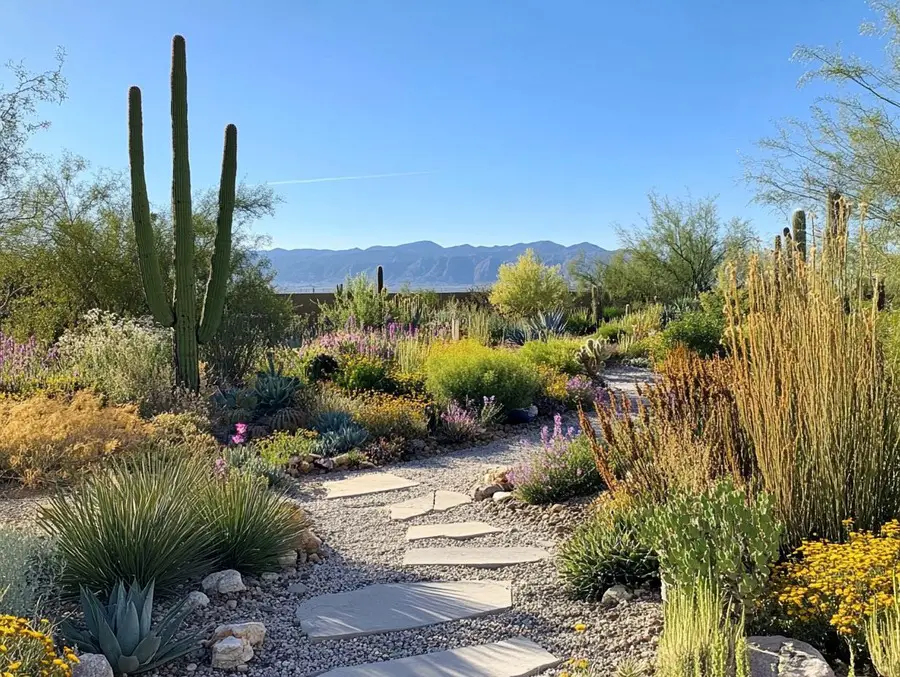
Xeriscaping has some fantastic benefits that go way beyond just looking good.
It can really help with water conservation, improve soil health, and boost overall environmental sustainability, which makes it a great option for gardeners dealing with tough climates.
By using drought-resistant plants and smart landscaping techniques, you can shrink your carbon footprint while creating a vibrant garden that supports local wildlife and enhances biodiversity.
Environmental and Cost Benefits
The environmental and cost benefits of xeriscaping are pretty impressive.
By choosing this approach, you not only cut down on water usage but also help promote healthier soil and local ecosystems—all while saving yourself some cash on maintenance and irrigation costs.
When you implement xeriscaping principles, like using native plants and smart watering techniques, you can create a vibrant garden that supports your community’s environmental goals and helps reduce the urban heat island effect.
Research suggests that xeriscaping can slash outdoor water consumption by up to 50%.
That’s a huge win, especially considering that about 30% of residential water is used for landscaping.
Plus, this method helps reduce soil erosion by encouraging plant coverage and root stability, which boosts local biodiversity.
Looking at long-term savings, studies indicate that your initial investment in xeriscaping could lead to maintenance cost reductions of 30-80% over the years.
These financial perks, along with increased resilience to drought and climate change, make xeriscaping a savvy choice for you and the environment.
Designing a Xeriscape
Designing a xeriscape takes some thought and consideration, especially when you factor in your climate zone and the specific needs of drought-resistant plants.
It’s all about promoting climate adaptation and resilience.
Whether you’re dreaming up a rock garden or planning to incorporate ornamental grasses and succulents, the key is to focus on maximizing soil health while minimizing water needs.
This way, you’ll create a harmonious space that really enhances your outdoor living experience.
Factors to Consider for Different Climates
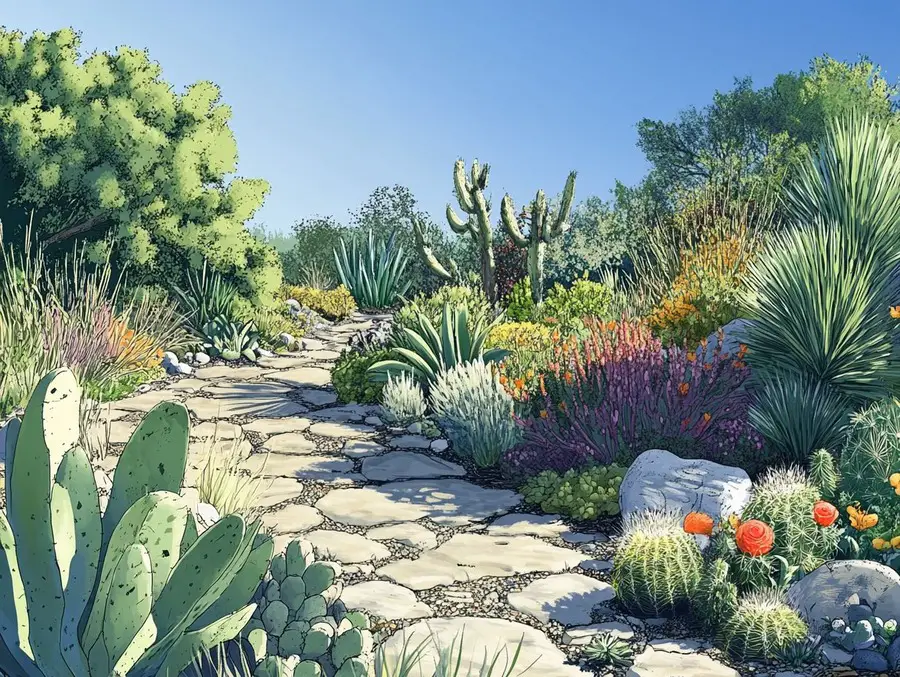
When you’re designing a xeriscape, it’s super important to think about the specific factors related to your climate zone.
Different regions need unique approaches for plant selection and garden maintenance, especially when you’re dealing with arid or semi-arid conditions.
By understanding your local rainfall patterns and picking the right xerophytes or native plants, you can set up your garden for seasonal planting and ensure it thrives over the long haul.
Recognizing the different climate zones—like desert, Mediterranean, and temperate—helps you figure out which species can really handle the local conditions.
Don’t forget about microclimates, too! These small variations within the broader climate can have a big impact on plant health, making it a great opportunity to include drought-resistant varieties that fit right in with their surroundings.
You can also boost your garden’s water conservation and environmental sustainability with good maintenance practices like mulching and drip irrigation, which also makes everything look nicer.
By harmonizing your plant choices with the unique characteristics of your landscape, you’ll create a flourishing, low-maintenance xeriscape that you can be proud of.
Choosing Plants for Xeriscaping
Choosing the right plants for your xeriscape is key to building a successful and sustainable garden.
By focusing on drought-resistant plants and native landscaping, you’ll help ensure your garden thrives with minimal water usage.
When you incorporate xeric plants that are naturally adapted to your region’s climate, you’ll enhance the biodiversity of your landscape and also promote healthy garden ecosystems.
And, you get to enjoy seasonal color and visual interest along the way!
Native and Drought-Resistant Plants
Incorporating native and drought-resistant plants into your xeriscape isn’t just a win for the environment.
It’s a way to make sure your garden thrives in a low-water setting with minimal irrigation.
Native plants are like the locals of the plant world—they know the terrain and are more resilient to seasonal droughts and unpredictable rainfall patterns.
Plus, xerophytes give you even more choices for landscaping that don’t suck up all the water.
When you choose species like California poppy or purple coneflower, you’re not just adding pretty flowers; you’re boosting landscape diversity and lending a helping hand to local wildlife.
These plants are right at home in their natural habitats, and they do wonders for soil health by preventing erosion and improving nutrient cycling.
Adding varieties like agave and yucca to your garden helps with conservation efforts, giving pollinators and other beneficial critters the resources they need.
By focusing on drought-tolerant plants, you’re paving the way for more sustainable gardening practices while building a resilient ecosystem that can adapt to whatever Mother Nature throws your way.
Implementing Xeriscaping Techniques
Using effective xeriscaping techniques is key for you to achieve maximum water conservation and keep your garden thriving.
By adopting efficient watering strategies like drip irrigation systems and embracing organic gardening practices, you can cut down on water usage while boosting soil moisture retention and improving the overall health of your plants.
Tips and Strategies for Water Conservation
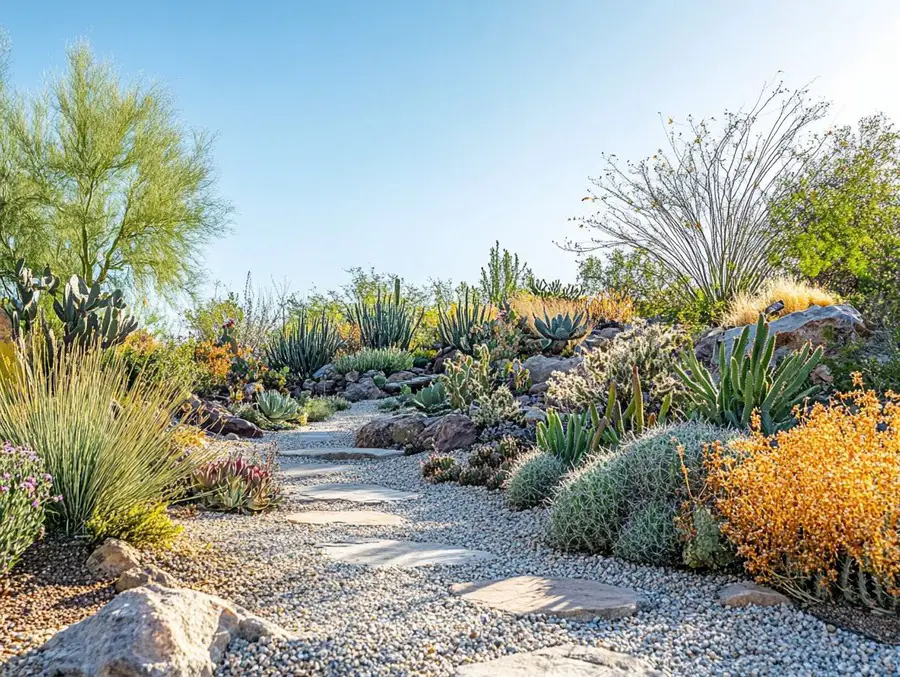
To effectively conserve water in your xeriscape, you’ll want to adopt some tips and strategies that focus on irrigation efficiency and keeping that soil nice and moist.
Techniques like applying mulch, designing your garden with contour beds, and using efficient watering methods can really cut down on water usage while keeping your plants and landscape thriving.
On top of that, having a strategic approach to seasonal droughts can supercharge the resilience of your xeriscape.
For example, using organic mulch helps retain soil moisture and protects the top layer from wind and rain, reducing soil erosion.
Implementing drip irrigation systems is a game changer—they give your plants targeted watering, ensuring they get just the right amount of moisture without wasting a drop.
Setting up windbreaks can shield your garden from harsh winds that might make drought conditions worse, keeping your plants healthier and less stressed.
And don’t forget about pest management techniques that work well with xeriscaping.
They can help create a stronger ecosystem and cut down on the need for excessive watering.
Maintaining a Xeriscape
Maintaining a xeriscape effectively is key to ensuring your garden thrives over the long haul.
It’s all about understanding the essential xeriscape principles that support sustainable gardening and healthy soil.
By sticking to regular maintenance practices—like seasonal planting and pest management—you can keep your drought-resistant plants looking vibrant and contribute to the overall ecological balance of your landscape.
Proper Care and Maintenance for Long-Term Success
Taking proper care of your xeriscape is essential for creating a vibrant garden ecosystem that supports pollinators and boosts landscape biodiversity.
By sticking to regular maintenance practices like weeding, pruning, and keeping an eye on soil moisture levels, you can help your xeric plants thrive while reaping all the benefits of your sustainable garden.
As the seasons change, it’s important to tweak your approach a bit.
In the spring, you’ll want to enrich the soil with some organic compost to amp up nutrient availability.
When summer rolls around, diligent watering strategies will be your best friend to minimize evaporation.
Autumn is the perfect time to add some seasonal color with native flowering plants that provide habitats for local wildlife.
And don’t forget about winter maintenance; protecting those vulnerable plant species from harsh weather is key.
Community education is also super important! By sharing these best practices, you can help others appreciate the beauty and ecological value of xeriscaping in diverse landscapes.
Xeriscaping for Different Climates FAQs
What is xeriscaping and how does it differ for different climates?
Xeriscaping is a landscaping technique that involves using drought-resistant plants and efficient irrigation methods to conserve water.
It differs for different climates because the type of drought-resistant plants used and the irrigation methods vary depending on the climate.
Why is xeriscaping recommended for areas with dry climates?
Xeriscaping is recommended for areas with dry climates because it helps conserve water and reduces the need for regular irrigation.
This is especially important in areas where water is scarce and droughts are common.
Can xeriscaping be applied in areas with different types of climates?
Yes, xeriscaping can be applied in areas with different types of climates.
However, the specific techniques and plants used may vary depending on the climate.
For example, in a desert climate, cacti and succulents may be used, while in a Mediterranean climate, drought-resistant herbs and shrubs may be more suitable.
What are some key factors to consider when xeriscaping for a specific climate?
Some key factors to consider when xeriscaping for a specific climate include the amount of rainfall, average temperature, and soil type.
These factors can help determine the best plants and irrigation methods to use for a successful xeriscaping project.
Is xeriscaping only beneficial in dry climates?
No, xeriscaping is beneficial in all types of climates. It can help conserve water and reduce maintenance needs in dry climates, while in wet climates it can help prevent water waste and waterlogging.
Xeriscaping can also benefit areas prone to extreme heat or cold, as drought-resistant plants are better able to survive in these conditions.
Are there any other benefits of xeriscaping for different climates?
Aside from conserving water and reducing maintenance needs, xeriscaping can also help improve soil health and wildlife habitats.
By using native drought-resistant plants, xeriscaping can also help preserve the natural ecosystem of a specific climate.
Xeriscape Garden Design & Layout: Easy Water-Wise Beauty
Best Plants for Xeriscape Gardens: Hardy & Beautiful
Xeriscape Garden Styles: Easy Low-Maintenance Options
Xeriscape Gardening Techniques: Easy Low-Water Tips
What is xeriscaping? A beginner’s guide to drought-tolerant landscaping – Colorado State University


